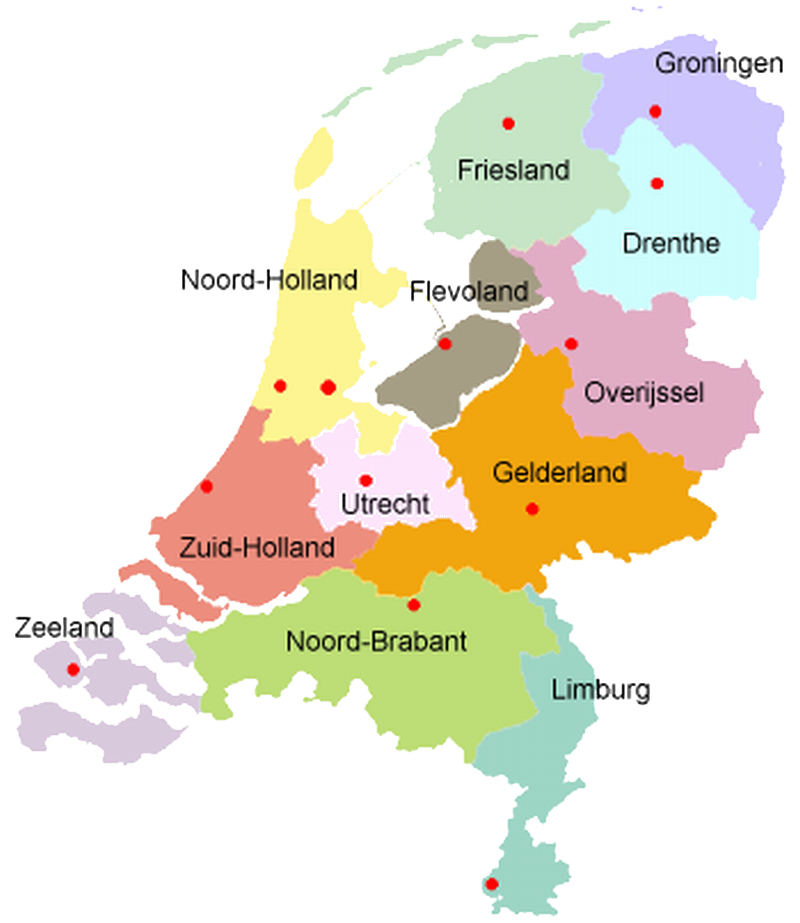groningen stad

medieval buildings and the iconic Martinitoren
Groningen Stad, commonly known as Groningen, is a captivating city nestled in the northern region of the Netherlands. With a rich history dating back to the Roman era, this vibrant metropolis effortlessly blends its storied past with a modern outlook, making it a top destination for both locals and travelers alike.
One of the city’s most striking features is its youthful energy, owing to the large student population attending the renowned University of Groningen. The bustling streets are alive with cultural events, lively cafes, and a thriving nightlife. Cyclists abound, as the city boasts an extensive network of bike paths, making it an eco-friendly and convenient means of transportation.
Groningen’s historic charm is evident in its architecture, with beautiful medieval buildings and the iconic Martinitoren dominating the skyline. The Groninger Museum, an architectural masterpiece itself, houses an impressive collection of modern and contemporary art.
Beyond its urban appeal, nature lovers are in for a treat as well. The surrounding countryside is dotted with picturesque villages, lush green landscapes, and serene waterways, perfect for leisurely bike rides and scenic walks.
Culturally diverse and welcoming, Groningen Stad offers a plethora of activities and events, from music festivals to art exhibitions, ensuring there’s always something to suit every taste.
In conclusion, Groningen Stad is a delightful fusion of history, modernity, and nature, making it an unforgettable destination for anyone seeking a genuine Dutch experience. Whether you’re a history enthusiast, a nature lover, or simply seeking a vibrant city vibe, Groningen Stad has it all.
Martinitoren graces the skyline
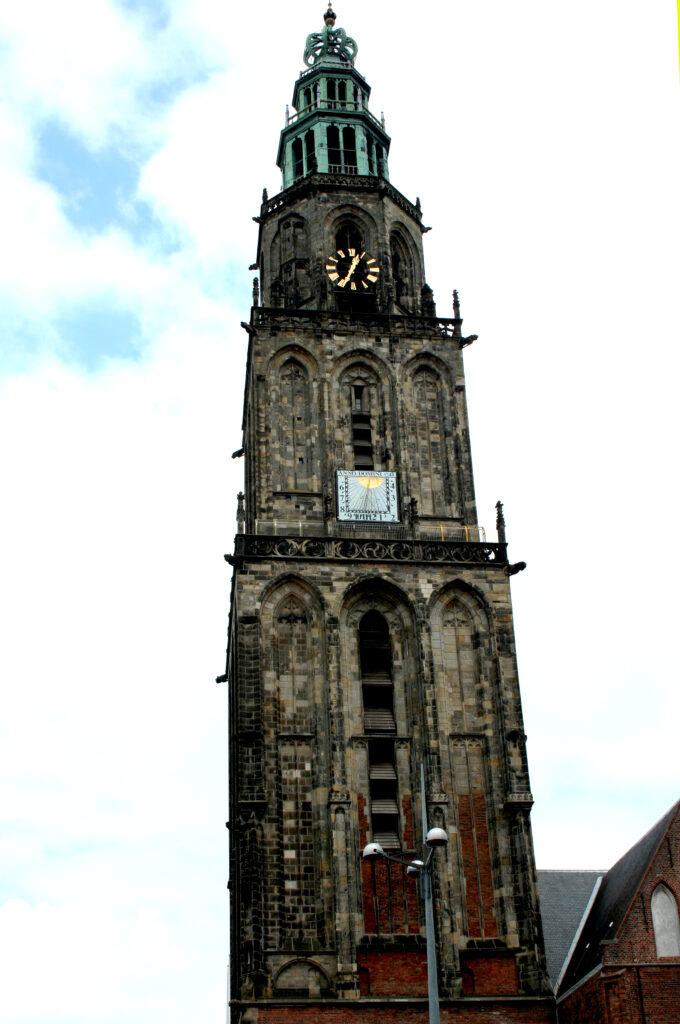
The Martinitoren, a majestic tower that graces the skyline of Groningen in the Netherlands, is steeped in a history that spans over half a millennium. Construction commenced in 1469, and the tower, standing at an impressive 97 meters, was finally completed in 1627. Originally part of the Martinikerk, a church dedicated to St. Martin, the Martinitoren became a prominent landmark and a vital part of the city’s identity.
Over the centuries, the Martinitoren has weathered various challenges. In 1577, a devastating fire ravaged the original church, leaving the tower intact. The 17th century saw lightning strikes causing damage, leading to subsequent renovations and alterations. The tower’s architecture beautifully combines elements of the Gothic and Renaissance styles, showcasing the artistic evolution over the years.
Beyond its architectural significance, the Martinitoren has played a practical role in the maritime history of Groningen. Sailors relied on the tower as a navigation aid, guiding them through the surrounding waterways. Today, the Martinitoren stands as a resilient symbol of Groningen’s past, offering visitors a glimpse into the city’s rich heritage. Those willing to climb its 311 steps are rewarded with breathtaking panoramic views, making the Martinitoren a must-visit historical treasure in the heart of Groningen.
The Groninger Museum

The Groninger Museum, located in the vibrant city of Groningen, Netherlands, stands as a testament to innovative architecture and a diverse collection of art. Designed by renowned architects Alessandro Mendini, Philippe Starck, and Coop Himmelb(l)au, the museum is a striking blend of modern and postmodern design elements.
Opened in 1994, the Groninger Museum houses an extensive and eclectic collection that spans contemporary art, design, and applied arts. The museum’s diverse exhibits include works by local and international artists, making it a cultural hub that reflects the dynamic nature of artistic expression.
One of the museum’s notable features is its ever-changing exhibitions, ensuring that visitors experience a fresh perspective with each visit. The striking structure of the building itself is an artwork, with its bold colors and unconventional shapes standing out in the cityscape.
Beyond the visual arts, the Groninger Museum often hosts cultural events, lectures, and educational programs, fostering a lively and engaging atmosphere. It has become a focal point for both locals and tourists, drawing them into the world of creativity and imagination.
In conclusion, the Groninger Museum is not merely a repository of art but a dynamic space that celebrates the evolution of artistic expression. Its unique architecture and diverse collections make it a must-visit destination for art enthusiasts seeking a captivating journey through the realms of contemporary creativity.



Map of the city of Groningen in 1575
The written history of Groningen begins in 1040 with the donation by the German emperor, Henry III, of goods and rights (the domains) to the church of Utrecht. Earlier, parts of the royal estate had already been donated to the Werden Monastery. Presumably, shortly before this deed, at the instigation of the bishop, the construction of a partial land defence around his properties was already started, with which Groningen also became a city in terms of appearance. The bishop was probably also responsible for many planning developments in the 11th and 12th centuries, such as the construction of a pattern of cobbled streets with roadside ditches that seems to have been based on a Roman castellum in the fashion of the time and the construction of St. Walburg’s Church around 1100 as its own private chapel.
Groningen, a student city par excellence

Groningen, a student city par excellence, embraces a vibrant academic culture that makes it unique in the Netherlands. With both a renowned university and a college, the city acts as a magnet for students from all corners of the country. Remarkably, 25% of Groningen’s 240,000 inhabitants are students, making it the city with the highest percentage of students in the Netherlands. As a result, Groningen is characterized not only by its rich history and charming architecture, but also by a vibrant youthful energy.
The presence of this large student population gives Groningen a dynamic character and ensures a constant flow of cultural and intellectual activities. From bustling student parties to academic symposia, the city offers a diverse range of events that add to the vibrant city life.
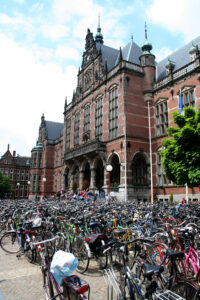 Groningen, as the youngest city in the Netherlands based on the age of its inhabitants, exudes youthfulness and innovation. It is a place where tradition and progress go hand in hand, making it not only an attractive environment for students, but also a city that lives and evolves with the energy of its youthful population.
Groningen, as the youngest city in the Netherlands based on the age of its inhabitants, exudes youthfulness and innovation. It is a place where tradition and progress go hand in hand, making it not only an attractive environment for students, but also a city that lives and evolves with the energy of its youthful population. The Noorderhaven
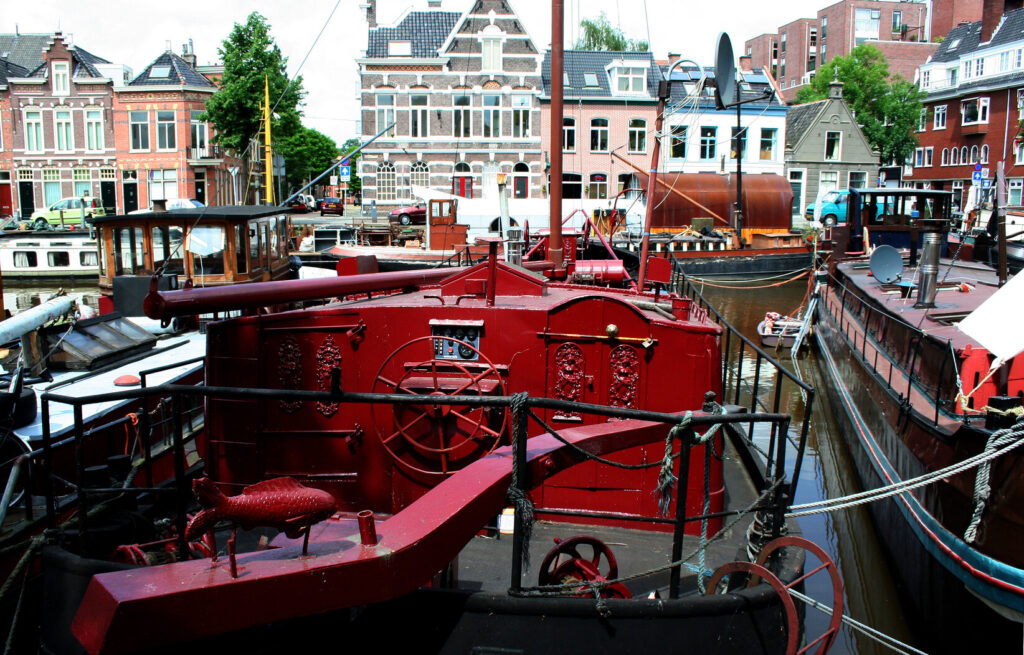
The Noorderhaven in Groningen, Netherlands, is a charming canal that winds its way through the heart of this historic city, offering a delightful glimpse into its rich cultural tapestry. Lined with picturesque warehouses and quaint houses, Noorderhaven is a visual feast that captures the essence of Groningen’s maritime past.
Originally constructed in the 17th century as part of a comprehensive urban planning project, the canal played a crucial role in facilitating trade and commerce. Today, it has evolved into a scenic waterway, providing a serene escape from the bustling city life. The historic warehouses that line its banks have been repurposed into trendy apartments and offices, seamlessly blending the old with the new.
Noorderhaven is not only a picturesque water route but also a vibrant hub for social activity. Cafés and restaurants dot its shores, creating a lively atmosphere for both locals and tourists. The canal-side terraces offer a perfect setting to enjoy a leisurely meal while soaking in the ambiance.
Whether strolling along its banks, taking a boat tour, or simply enjoying a moment of tranquility by the water, Noorderhaven encapsulates the timeless charm of Groningen. It stands as a testament to the city’s ability to seamlessly integrate its rich history into the fabric of contemporary life, making it a must-visit destination for those seeking a blend of culture, history, and scenic beauty.

The city coat of arms is a gold shield depicting a double-headed black eagle with a silver shield on its chest. There is a green crossbar on this silver shield. The city’s coat of arms stood for the areas where the city was lord and master. This concerned the areas of Gorecht, the two Oldambten (Wold-Oldambt and Klei-Oldambt), Reiderland and Westerwolde.
city maid of groningen
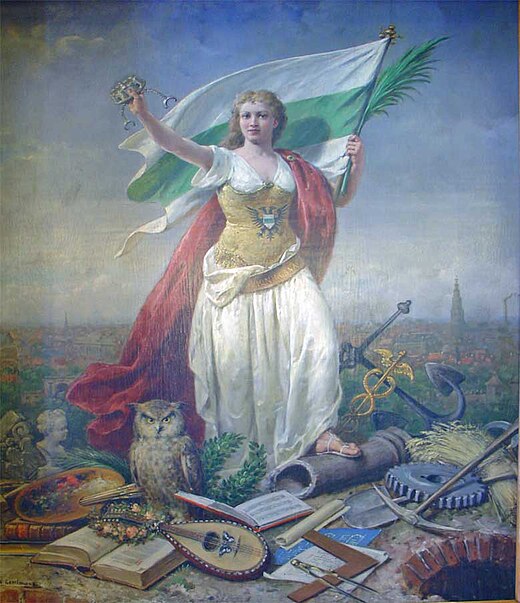
A virgin as the personification of a city or country is a motif that can be found on Greek coins as early as ancient times. During this time, the city maiden was often deified and thus worshipped as a goddess. The motif has always existed, and in the Renaissance it became popular again. It is especially suitable as a symbol of a republic. In Amsterdam, in 1655 there was a city maid in the City Hall (now the Royal Palace), and in the later city hall in the Prinsenhof there is a city maid in wood by John Raedecker.
The Korenbeurs
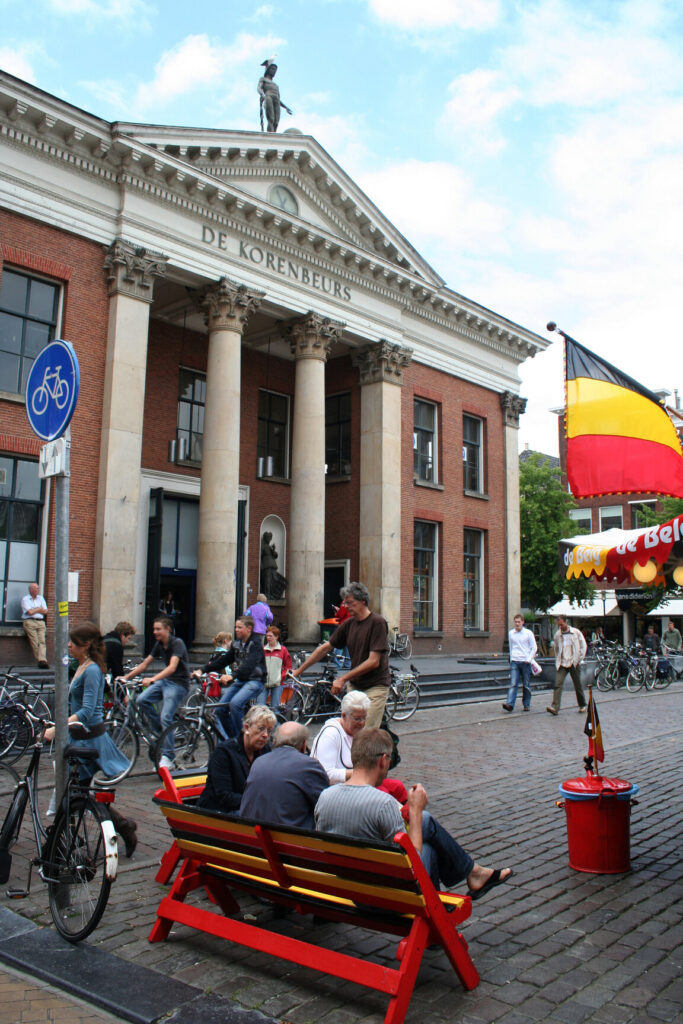
The Korenbeurs, situated in the heart of Groningen, stands as a testament to the city’s rich history and vibrant culture. Built in the 19th century, this architectural gem originally served as a grain exchange market, facilitating the bustling trade that fueled the region’s economy. Today, the Korenbeurs has transformed into a multifunctional space that preserves its historic charm while adapting to modern needs.
The building’s exterior, adorned with intricate details, reflects the neoclassical style of its era. As you step inside, you’re greeted by a captivating blend of old-world elegance and contemporary functionality. The Korenbeurs now houses a variety of businesses, including trendy cafes, boutique shops, and cultural spaces, making it a dynamic hub for locals and visitors alike.
Whether you’re sipping a cup of coffee in one of its chic cafes or exploring the unique offerings of its diverse shops, the Korenbeurs provides a delightful experience that seamlessly merges past and present. Its central location makes it a focal point for community gatherings and events, adding to the lively atmosphere of Groningen’s city center.
In essence, the Korenbeurs is more than just a historical landmark; it is a living testament to Groningen’s ability to blend tradition with modernity, creating a space that continues to play a vital role in the city’s cultural and economic life.






